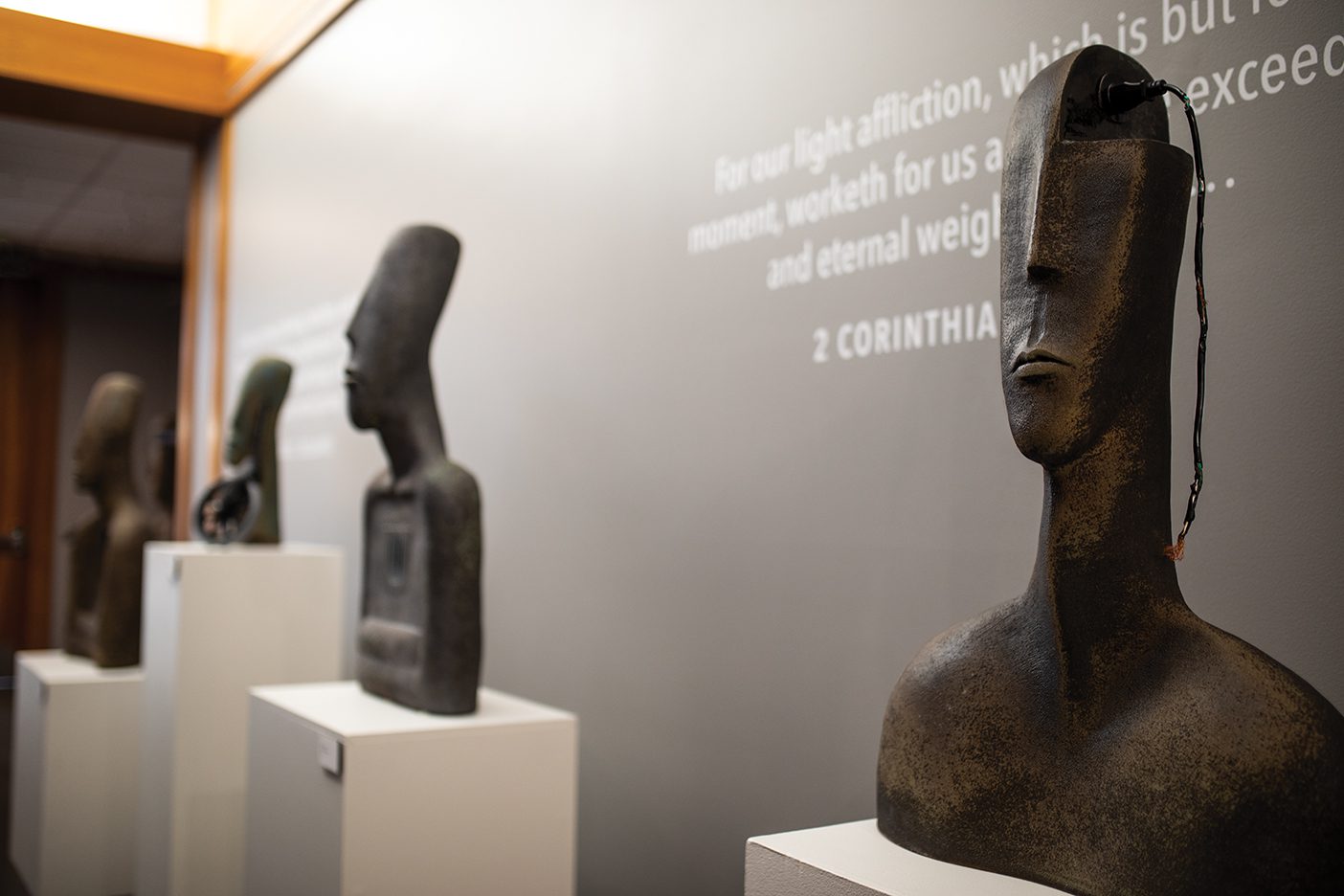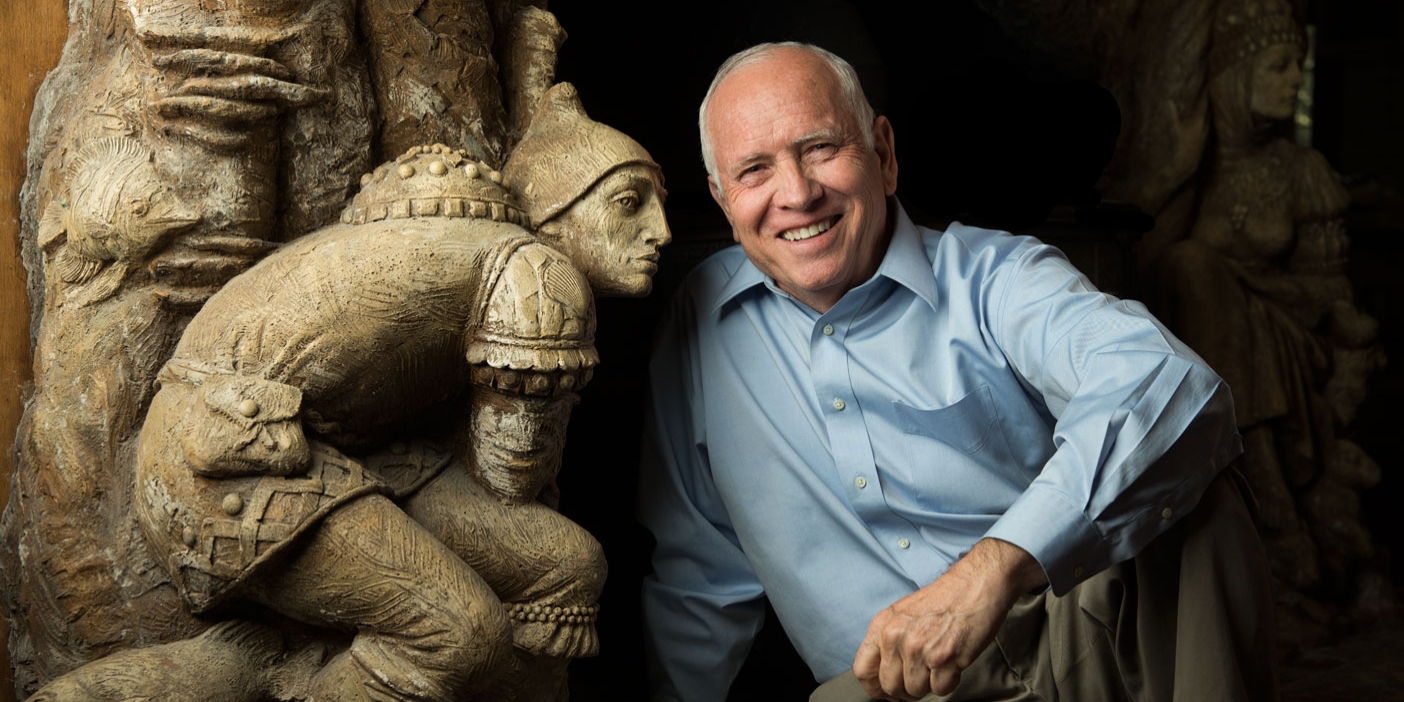“It started with fear,” says Ryan W. Moffett (MA ’05). “Everybody I knew with MS was in a wheelchair.”
Moffett, a ceramics teacher at Murray High School, stands in his art studio next to one of his sculptures—a large, ceramic torso and head with minimal details. It’s one of a series that he created in the wake of learning he had multiple sclerosis in 2013. Moffett titled the sculpture Demyelination, after the nervous system–eroding process that occurs with MS. The sculpture is inspired by Bronze Age statues made by island dwellers in the Aegean Sea, but it also departs from the traditional: the top left chunk of the head is cleanly cut away where the brain should be, and a frayed electrical cord protrudes from the right half.
Much of his work features deteriorating electrical cords. “If [the plastic insulation around a cord] gets cracked, ruined, or destroyed, then the electrical cord shorts out,” Moffett explains. “That’s kind of what’s happening with my nerves.” MS causes the immune system to attack the myelin-sheath coating that protects the nerves. This demyelination weakens electrical signals between the brain and the body. Demyelination exhibits different symptoms in each person with MS; Moffett’s symptoms include constant tingling and numbness in his feet.

An exhibition in the Harold B. Lee Library recently featured works by Moffett, along with those of artists Jason A. Lanegan (MFA ’04) and Justin Wheatley. The exhibition, titled Pro Tempore—Latin for “for the time being”—focuses on enduring mortal trials. Moffett’s MS-inspired sculptures were the perfect fit.
One sculpture in the exhibition, Dizzy in a Wheelchair, depicts a tilted head leaning on a wheelchair leg for support. Another shows an electric plug where the heart should be, a gap between the plug and outlet. The name of the piece describes how Moffett feels much of the time: Unplugged. And of course, there is the frayed cord—the demyelination. “I had people come up to me [at my first show] and say, ‘Oh my gosh, this is exactly what MS feels like,’” Moffett says.
“Everyone I knew with MS was in a wheelchair.” —Ryan Moffett
Along with providing a visual representation of his fear, Moffett also wants to share hope amid the struggle of his degenerative disease. One piece in the exhibition, Starts in the Heart, illustrates the revelatory process with a vibrant red light emitting upward from the heart and a glowing blue marble in the brain. After his diagnosis, “there was a lot of scripture study and prayer and experiences that happened that confirmed in my mind and in my heart that everything was going to be okay,” says Moffett. “Even if I do end up in a wheelchair, it’s okay. That perspective, I think, is carried on in my artwork.”












